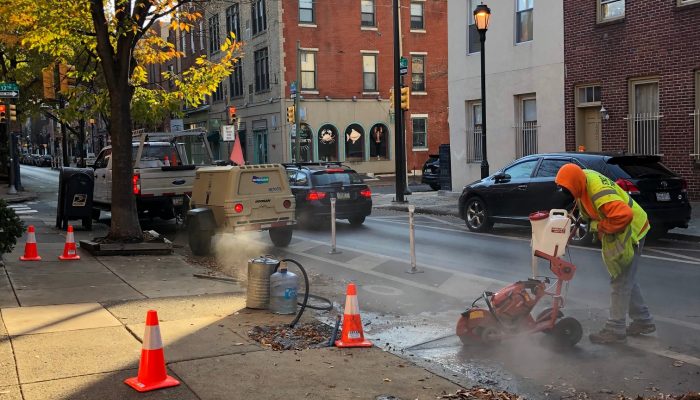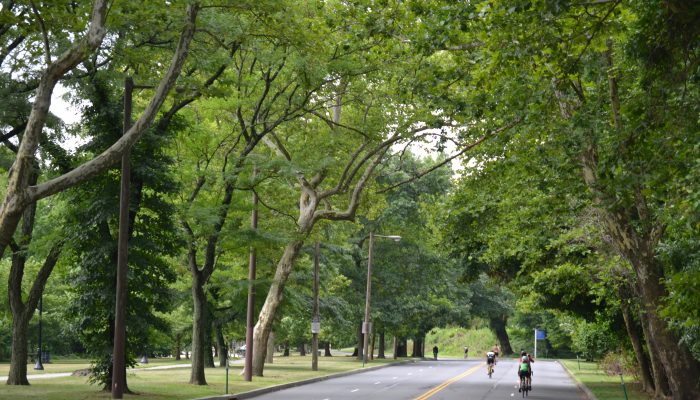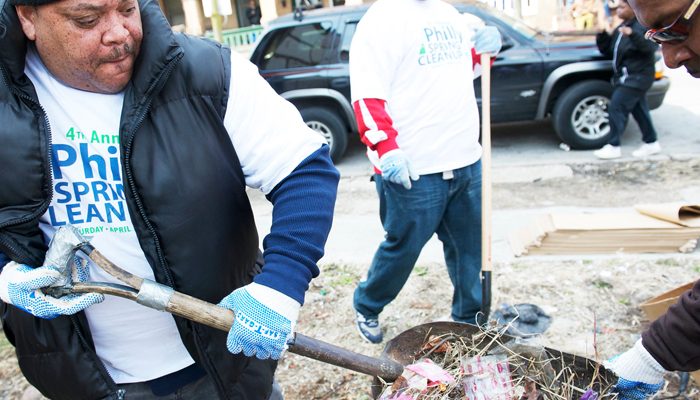In-street permanent bicycle counters have been installed in the bike lanes on Spruce and Pine Streets, near 12th Street, in collaboration with the Office of Transportation, Infrastructure & Sustainability (OTIS), the Delaware Valley Regional Planning Commission (DVRPC) and the Philadelphia Streets Department. These are the first in-street bicycle counters in the region.
What are in-street bicycle counters?
Bicycle counters are electronic devices that detect the number of bicycles passing over a specific location during a certain period of time. Gathering data on bicycle numbers helps City staff and planning partners to monitor seasonal and time-of-day trends, particularly on high-use corridors like Spruce and Pine Streets. With those counts on hand, the City can make decisions about traffic flow and infrastructure improvements.
Unlike the other permanent counters on our region’s trails, these in-street counters are the first of their kind in a bike lane on a city street. This is a great new source of data because we’re able to monitor the levels of biking on each street, 24 hours a day, 365 days of the year.
Why are permanent in-street bicycle counters important?
The data from these counters will help OTIS better understand trends in transportation cycling and also improve the usefulness of the short term counts done by our partners at DVRPC. Good data is a necessary condition for both project prioritization and project selection.
There has also been an increase in bike ridership due to COVID-19 as more Philadelphians seek ways to safely travel and recreate while practicing social distancing. With unexpected shifts in travel patterns, planners will now be able to see how trends change over time during planned or unplanned circumstances.
This is an important milestone for the city’s bike infrastructure. Installing the region’s first in-street bicycle counters is an investment in modernizing the city’s bike lanes and improving safe bicycle mobility.
Thanks to OTIS for coordinating communications with the property owners to install the counters which are located in the street and public right-of-way. To the Streets Department crews for working with DVRPC technicians to install the devices, and to DVRPC for providing the equipment, and housing and sharing the data in their website.




